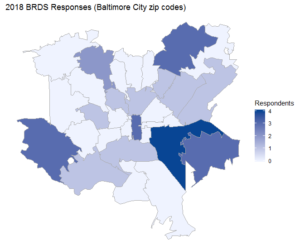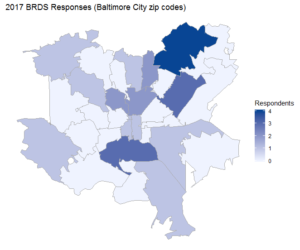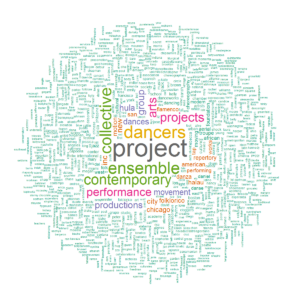The Baltimore Regional Dance Survey (BRDS) 2020 Edition is now live. This year, it’s January 1st! Click this to register and participate at your convenience.
The purpose of the Baltimore Regional Dance Survey is to gather sufficient information on dance and the dance economy in the Baltimore region to identify gaps and opportunities, help direct resources to address those gaps and opportunities, make informed and credible policy recommendations when questions impacting dance in and around Baltimore arise, and to help dancers throughout the region understand and work with each other to create a more constructive and productive environment for dance.
The only major change from last year is a question about current (well, 2019) dance habits, in contrast to your life-long personal dance history. This will address situations for dancers that started in (for example) ballet, but moved on to something else later in their career.
The Baltimore Regional Dance Survey is anonymous and entirely voluntary. All questions, except the first couple (which determine the parts of the survey that are relevant to you), are optional. You can share as much, or as little information, as you want. You do need a valid email to register, but your answers are anonymized and not associated with the email.
2020 is the most important year for the Baltimore Regional Dance Survey. There are several real “brick and mortar” opportunities in and around Baltimore. Broad, representative participation in the BRDS is the most convincing data I can offer when someone asks why they should do something for, with, or about dance in Baltimore. I’ll be making that case for some people as early as late January, so please be counted! Everyone that learned or taught dance, choreographed, performed, worked with or supported dancers in the Baltimore region during 2019 is encouraged to participate. We really do mean everyone – the experience of the newest, just-had-my-first-class dancer is just as relevant as in-business-for-decades studio owner.
Please participate yourself and share this page ( http://inthedancersstudio.com/brds2020 ), the direct registration link
( https://www.inthedancersstudio.com/s/index.php/788622?lang=en ), and the tag #BRDS2020 with your dance colleagues, students, teachers, mentors, coworkers, and friends.
March 1 2020 Update: I’ve fixed a field-length problem with one of the performance-block questions. I don’t think this will impact results (I think we can figure out the abbreviations used so far), but you now have more than 5 characters to describe your preferred performance venue.


